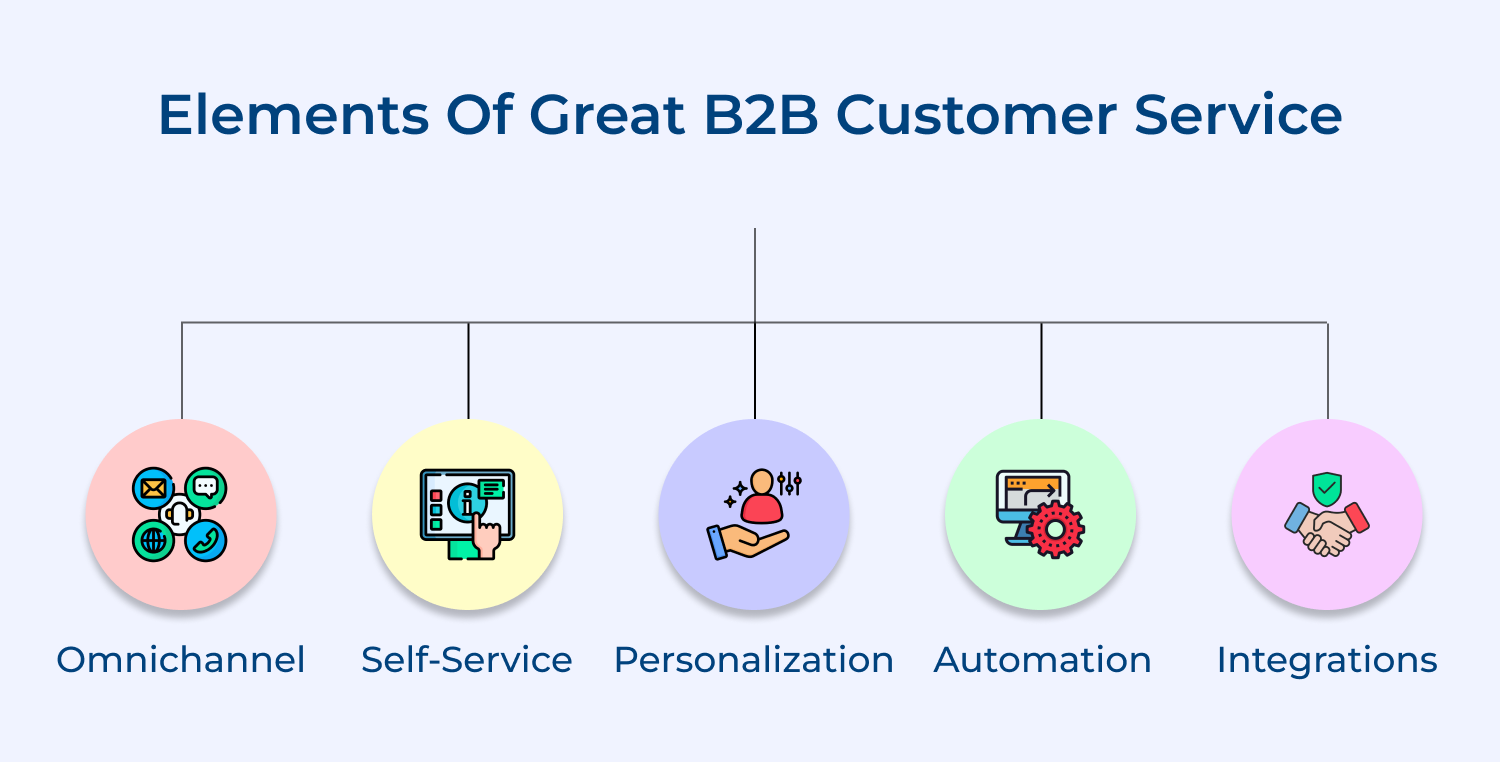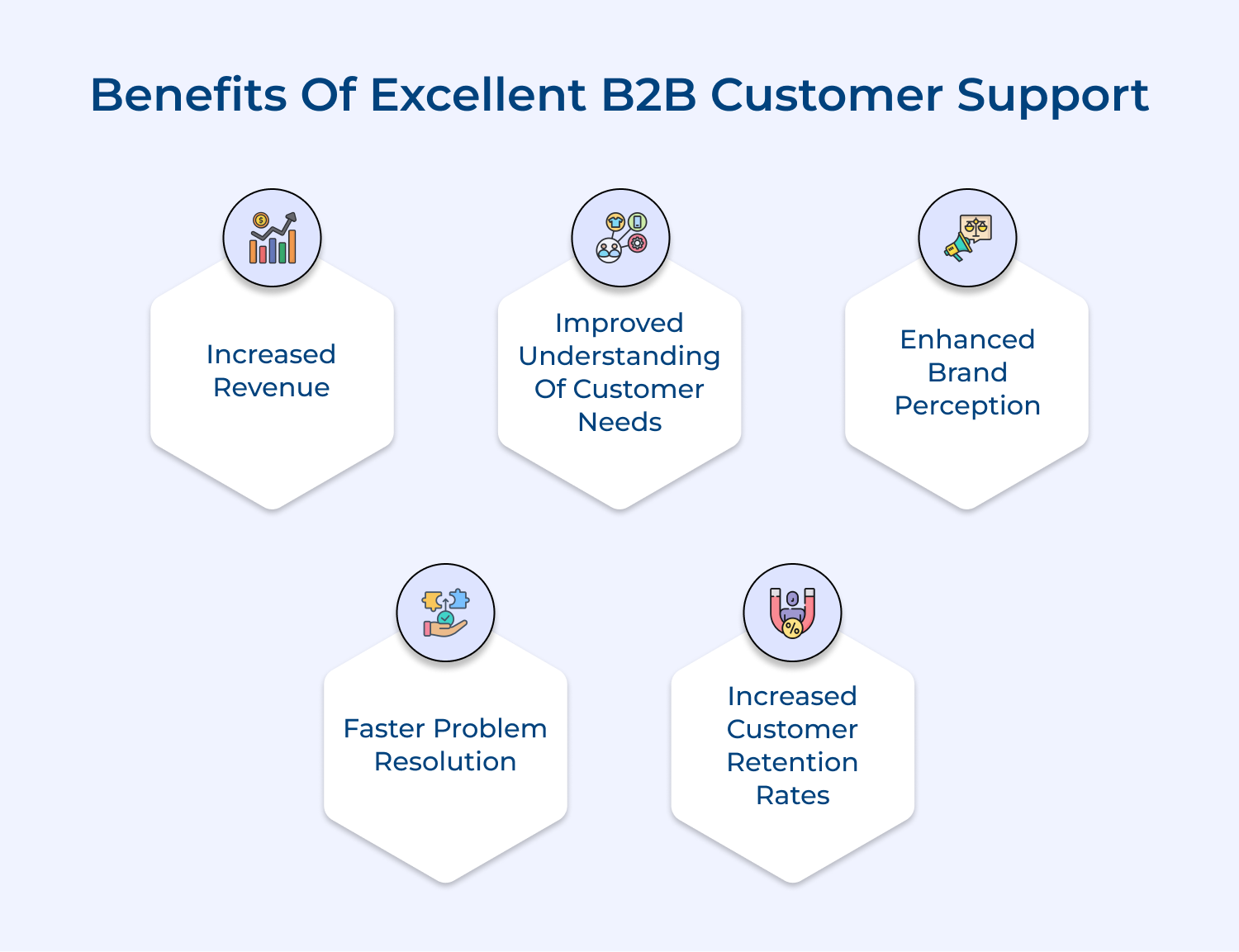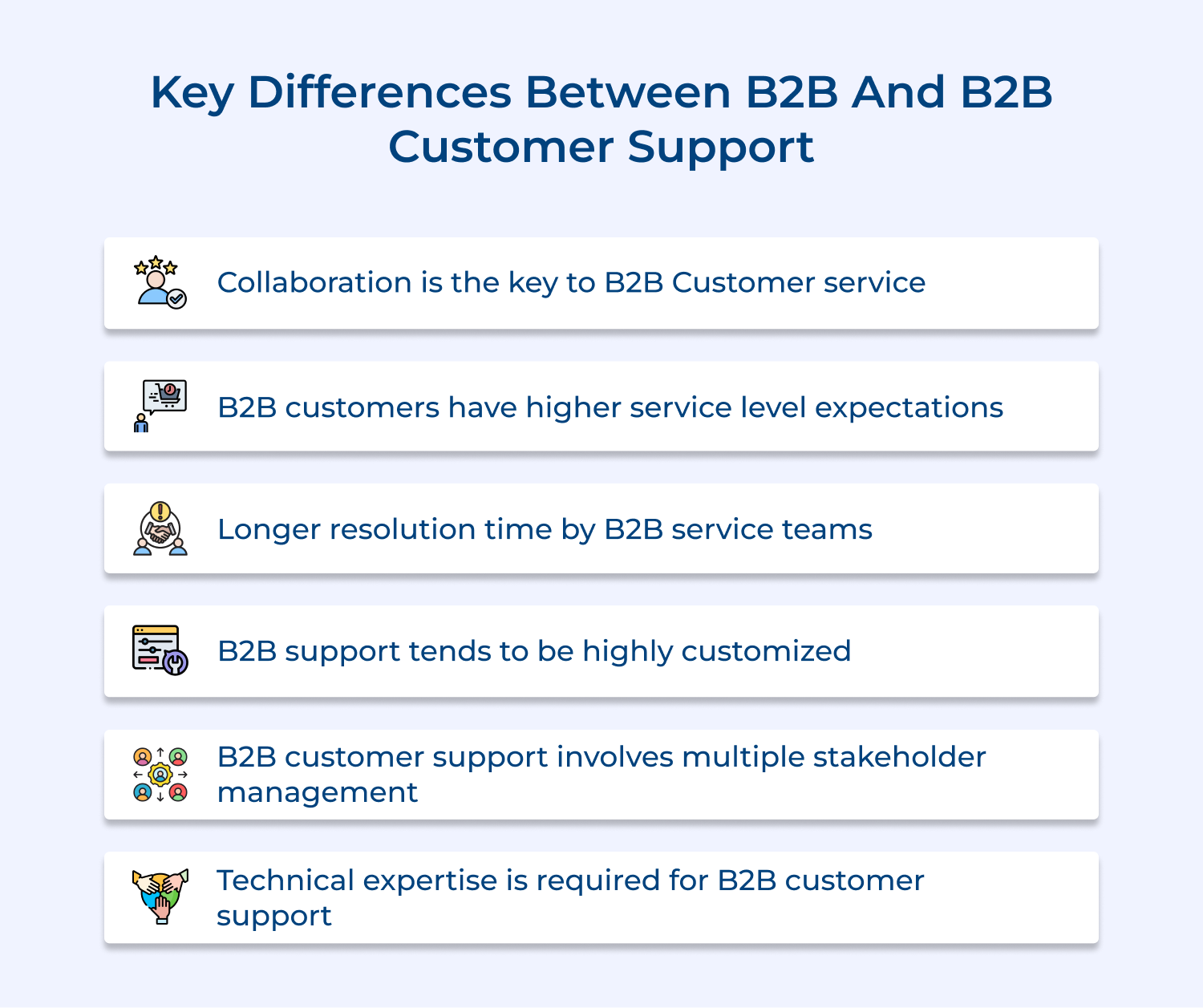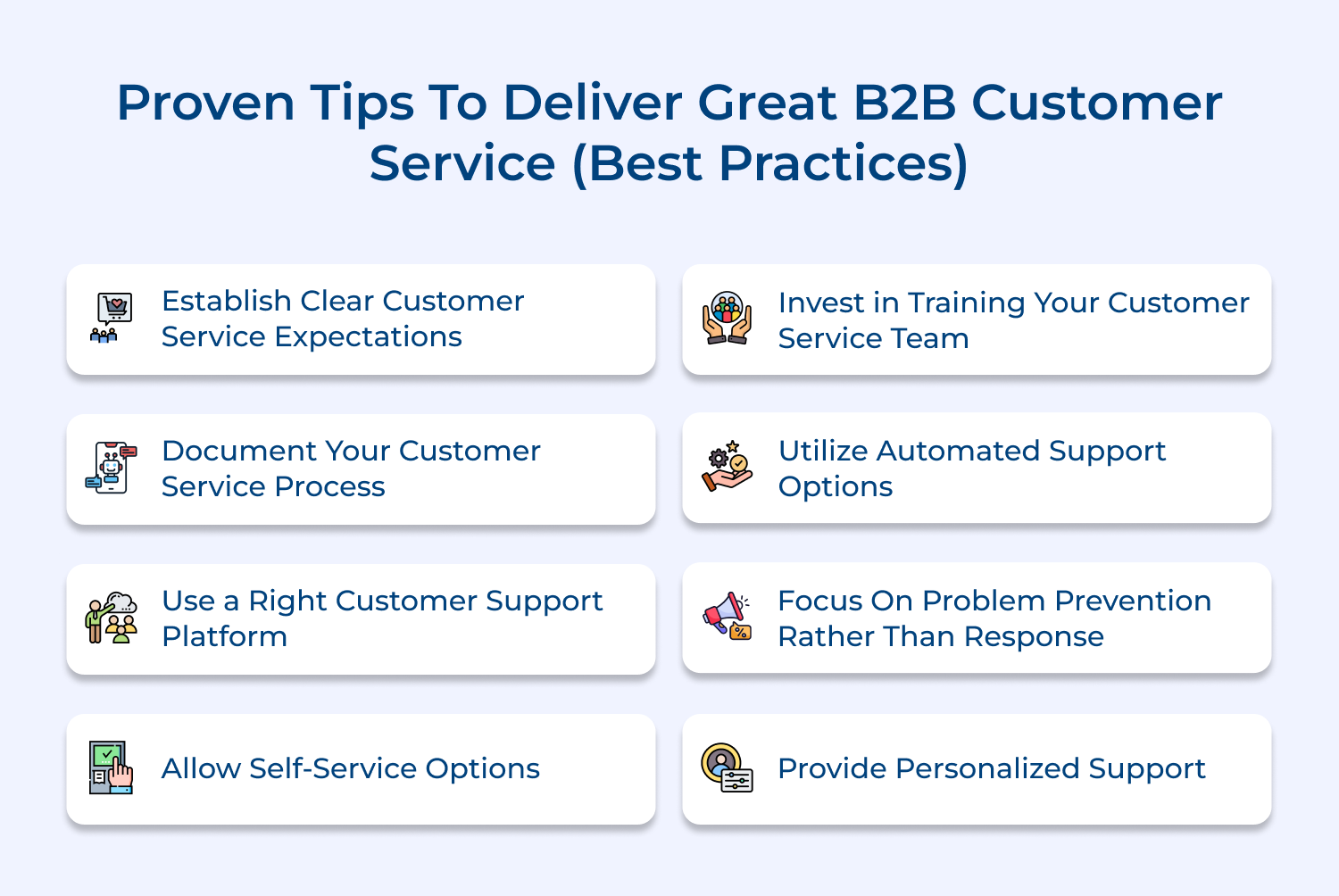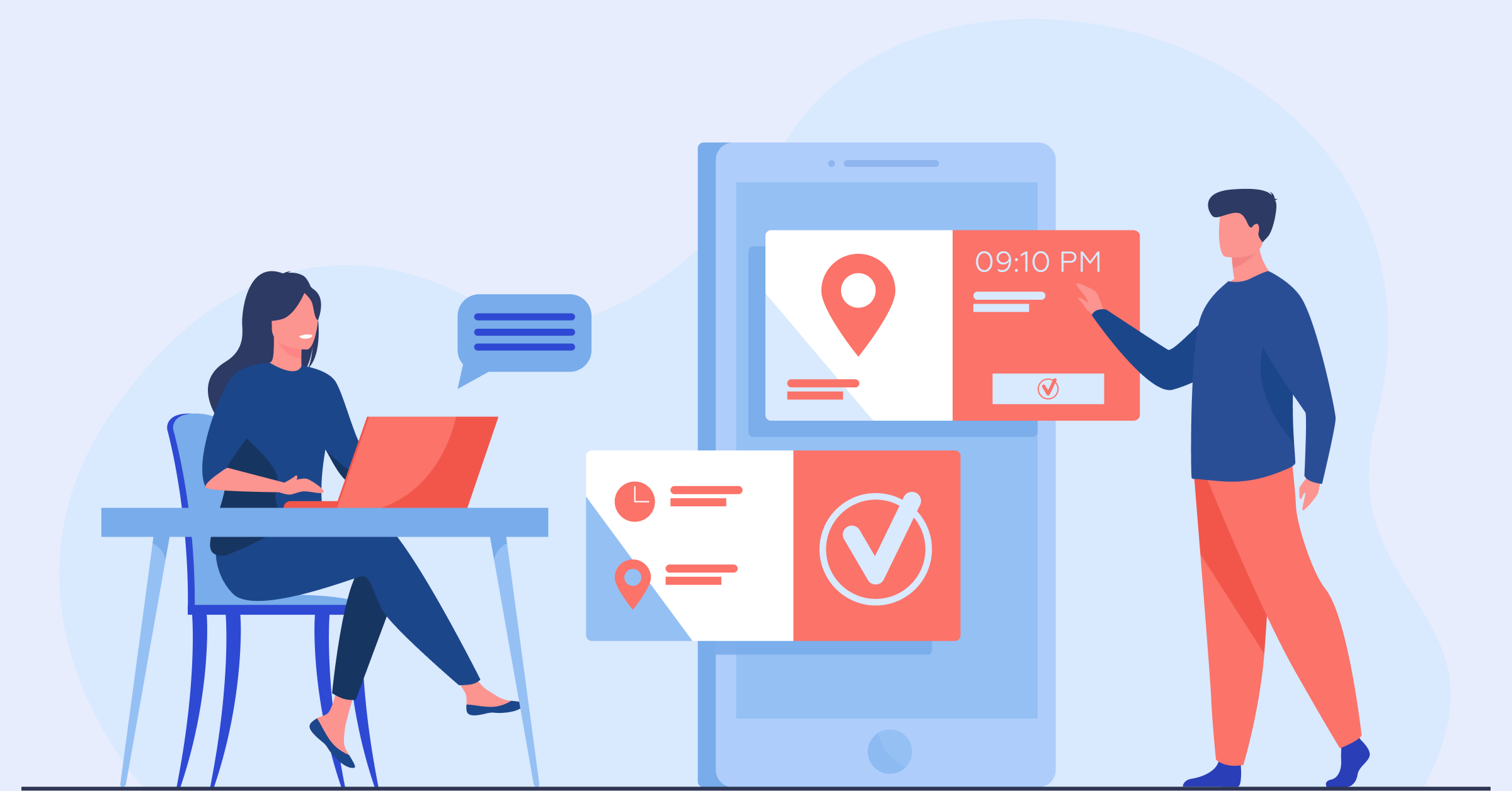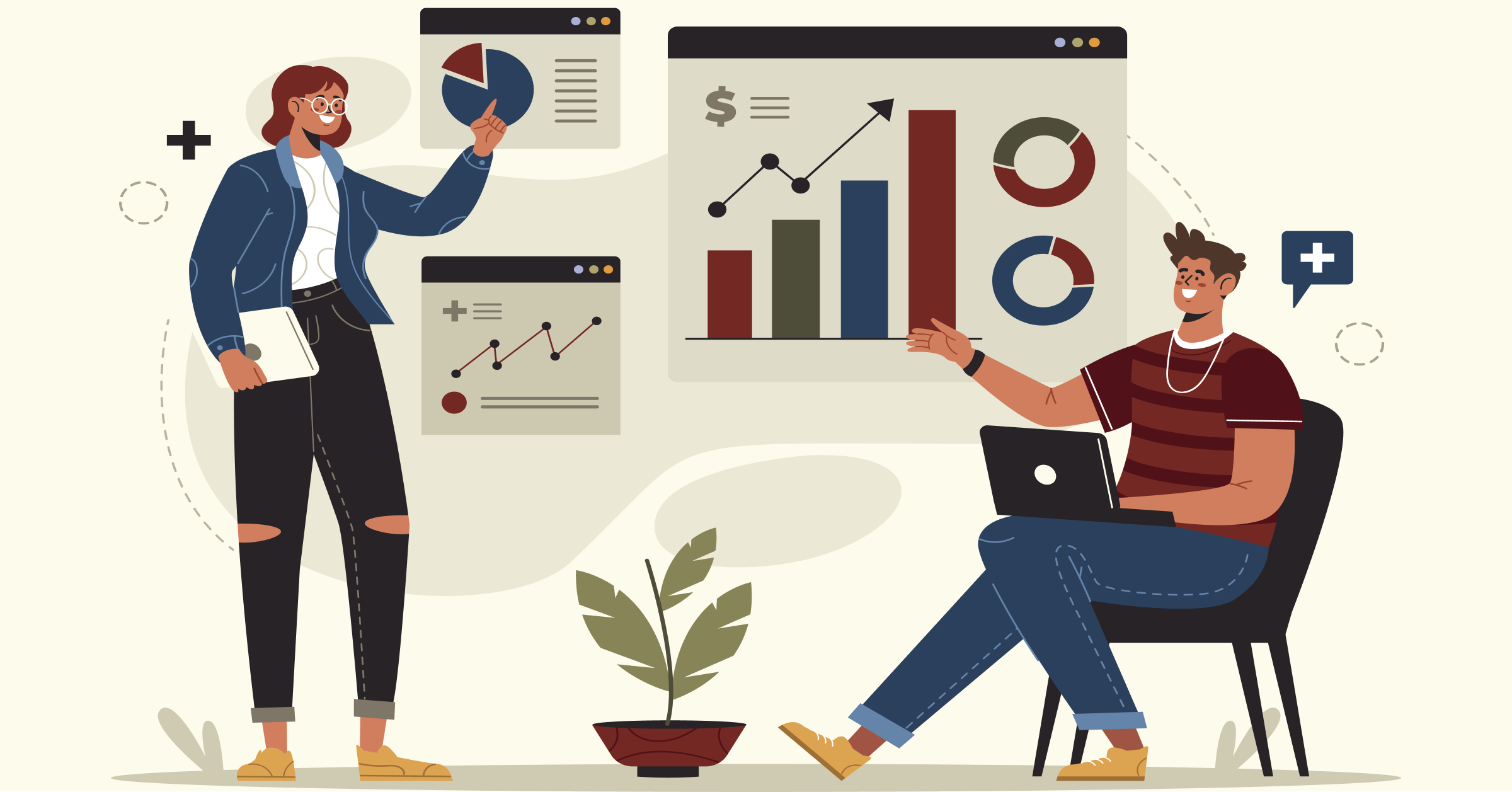#1. Establish Clear Customer Service Expectations
It is important to be upfront with your customers about what kind of customer service they will receive when they make a purchase from you.
Ensure that you include a section in your terms and conditions or website outlining the type of customer service that you offer as well as what people can expect if they have an issue or complaint about one of your products or services.
Best Practices
- Clearly communicate customer service policies, such as response times and methods of communication.
- Have a clear process for handling common customer complaints.
- Provide customers with the contact information of your customer service team so they know who to reach out to when they have issues or questions.
#2. Document Your Customer Service Process
The critical step often missed by many B2B organizations is to plan and document an effective customer service process.
A good customer service process should cover all the steps from receiving a customer query through resolving it, clearly outlining roles, tasks and expected outcomes. it will help improve efficiency and communication internally, as well as providing customers with greater clarity on how their issue will be addressed.
Best Practices
- Develop written customer service protocols that cover all aspects of your customer service experience, from responding to inquiries to resolving complaints.
- Create detailed customer service processes for each support channel–email, chat, phone and so on–to ensure that every inquiry is treated consistently.
- Ensure that all customer service team members are trained on your company’s customer service protocols and policies.
#3. Use a Right Customer Support Platform
A robust customer support platform centralizes all client interactions while automating routine tasks. This technology backbone ensures no support requests slip through cracks, particularly crucial when managing complex B2B relationships with multiple stakeholders and extensive service contracts. When selecting the optimal customer support platform for your B2B operations, consider these critical factors:
- Scalability capabilities: should accommodate your growing business needs without performance degradation, allowing you to add new users, features, and integrations seamlessly as your client base expands.
- Integration flexibility: must connect with your existing tech stack including CRM, email marketing tools, and analytics platforms to create a unified ecosystem that prevents data silos and provides complete customer visibility.
- Customizable workflow management: should adapt to your specific support processes rather than forcing your team to change established procedures, enabling you to design approval chains and escalation paths that match your organizational structure.
- Comprehensive analytics functionality: needs to deliver actionable insights about support performance, customer satisfaction trends, and potential bottlenecks through intuitive dashboards and detailed reporting capabilities.
Selecting the appropriate support platform represents a foundational decision that influences every customer interaction. The right system transforms support from a reactive necessity into a proactive business advantage that strengthens client relationships while providing valuable operational intelligence.
#4. Allow Self-Service Options
Offering self-service support options on your website like FAQs, tutorials and user forums & discussions – specialized around particular technical products or topics. It helps users get answers quickly without needing additional support from a real person while still getting accurate information directly relevant to their issues.
Further, it allows people to work faster while freeing up resources that go back into helping other customers who need more hands-on attention – maximizing efficiency.
Best practices:
- Offer dedicated support channels such as a knowledge base or community forum that allows customers to find helpful information and ask questions on their own.
- Create options for self-service whenever possible, including ordering, tracking orders, and requesting status updates through automated responses or FAQs.
#5. Invest in Training Your Customer Service Team
Comprehensive training transforms support agents into strategic advisors who understand not only your products but also your clients’ business contexts and industry challenges. This deeper understanding enables representatives to deliver solutions that address both immediate concerns and underlying business objectives:
- Technical product certification program: helps representatives understand the full capabilities and limitations of your offerings, enabling them to troubleshoot efficiently and recommend optimal configurations tailored to each client’s specific technical environment.
- Industry-specific knowledge development: educates your team about clients’ vertical markets, regulatory considerations, and typical business challenges, allowing them to speak the same language as clients and anticipate needs before they’re explicitly stated.
- Active listening and problem diagnosis training: teach representatives to identify root causes rather than symptoms by asking probing questions and interpreting both explicit statements and implicit concerns in client communications.
- Consultative solution development workshops: build skills in crafting comprehensive answers that address immediate issues while suggesting proactive improvements that demonstrate value beyond basic problem resolution.
For example after implementing a structured 12-week training program, TechSolutions saw customer satisfaction scores increase by 37% while simultaneously reducing average resolution times by 28%. This improvement directly contributed to a 15% increase in contract renewals among enterprise clients during the following quarter.
#6. Utilize Automated Support Options
Using automated services such as chatbots can reduce wait times for customers seeking help with simpler issues or queries, allowing them to get fast responses without having to contact a support representative.
Automation also helps reduce human errors since there’s no human input required during interactions. It means that customers don’t have to worry about dealing with unexpected delays when dealing with your business – making it an overall better experience for everyone involved.
Best practices:
- Leverage technologies like AI-powered chatbots to provide customers with a seamless experience by quickly responding to frequently asked questions.
- Automate emails or other communications that require personalized responses so customers can get their issues addressed right away.
#7. Focus On Problem Prevention Rather Than Response
Never wait until a problem arises before taking action – instead, focus on preventing potential issues before they ever happen by proactively monitoring customer accounts for suspicious activity.
You should regularly update product documentation so that all bases are covered when it comes time for users to utilize them after the purchase has been made.
Best practices:
- Implement systems and processes that prevent problems before they occur by identifying potential issues early on and taking action before customers become frustrated.
- Monitor customer feedback closely to spot patterns of dissatisfaction across products, services, or processes so you can address them in a timely manner.
#8. Provide Personalized Support
Personalized customer service is key to providing a superior customer experience. It can be achieved by offering various support options like live chat, video chat, co-browsing, how-to guides, ebooks, and whitepapers.
The comprehensive guide of customer service empowers them to quickly discover these support offerings when they need assistance.
Best practices:
- Use automated solutions to streamline customer interactions while still delivering personalized responses.
- Leverage existing data points about customers, such as past purchases or engagement levels, to customize interactions with each one individually.
B2B Customer Service Amplifies Your Support Experience
B2B customer service is a valuable tool in providing customers with the highest level of support experience. This means providing tailored solutions to their B2B customers that take into account the individual company’s needs, goals and business objectives.
Businesses should also leverage technology and data-driven insights in order to further enhance the customer experience they offer. By focusing on great customer service for B2B companies, it can improve customer satisfaction and build loyalty, which can lead to increased sales, better retention rates as well as greater market share.

